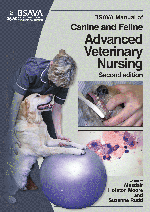
Full text loading...

For some routine radiographic examinations of cats and dogs there are several alternative positioning techniques, and a number are described in Figure 11.1. The indications and patient positioning for a selection of more specialized radiographic examinations is also described. These views are not part of a routine radiographic interpretation, but should be used at the specific request of the veterinary surgeon when trying to answer a specific question about the condition being investigated. These advanced radiographic positioning techniques are also described in Figure 11.1. This chapter informs on Advanced contrast radiography; Digital radiography; Fluoroscopy; Ultrasonography; Magnetic resonance imaging; Scintigraphy; and Other advanced imaging techniques.
Advanced imaging, Page 1 of 1
< Previous page | Next page > /docserver/preview/fulltext/10.22233/9781905319725/9781905319725.11-1.gif

Full text loading...






























